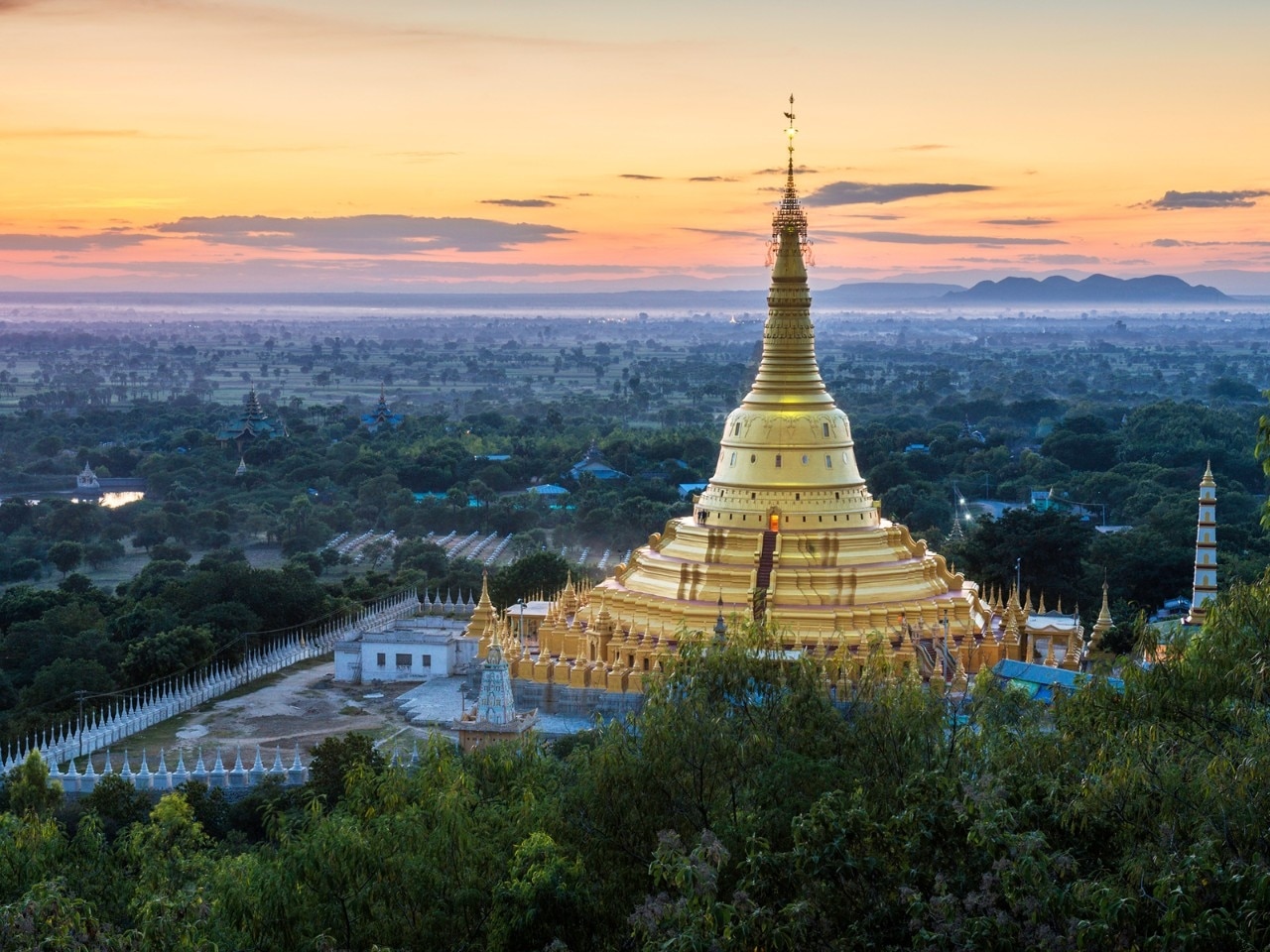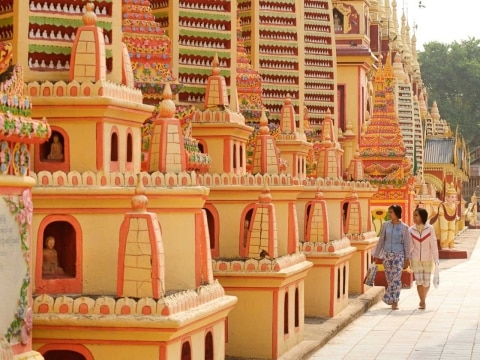Is This Myanmar's Most Fascinating Religious Site?

The town of Monywa may not be the most well-known destination in Myanmar but it's home to some of the most fascinating Buddhist sites you'll ever see.
Monywa is located between Myanmar’s much-visited cities of Bagan (a temple complex rivalling Cambodia’s Angkor Wat) and Mandalay (the country’s last royal capital). As it’s off the main highway, few – if any – tourists stop here but this is likely to change, given that Monywa is the gateway to some of the more fascinating religious sites in the region.
Standing head and shoulders – quite literally – above the rest is the Laykyun Setkyar Buddha. This golden-robed figure rises from the arid farmland of Sagaing Region like a mirage. At 116 metres tall, it’s the world’s second-largest statue (after the Spring Temple Buddha in China). For reference, that’s more than three times the size of Christ the Redeemer in Rio de Janeiro.
But the height of the Laykyun Setkyar Buddha isn’t what makes it so intriguing. Both devotees and tourists can enter the statue and scramble up its 31 levels, many of which are covered with gruesome murals of Buddhism’s little-known “hell realms”. The artworks depict horned creatures chopping up supposed sinners, babies being cannibalised and Mad Max-esque steamrollers decapitating the masses.

The surrounding gardens are far more serene. The Laykyun Setkyar Buddha is located within the Maha Bodhi Ta Htaung complex, which translates as “1000 great Bodhi trees”. After being scared witless by the Buddhist hells, wander around fields of stupas and see the long Reclining Buddha.
Nearby Thanboddhay Pagoda is about numbers rather than measurements. At first glance, it has all the regular trappings of Myanmar’s other pagodas but a walk around the halls soon reveals the approximately 500,000 miniature buddhas crammed into every available wall and ceiling space.
A bleak drive through some of the area’s mining plots leads to the Hpo Win Daung caves. Better described as rocky alcoves, they were carved by hand between the 14th and 18th centuries. Many are decorated with vivid religious paintings and statuettes. The caves are often deserted so you may end up sharing them with only the resident monkeys.
And don’t miss the neighbouring Shwe Ba Taung caves. This site is younger than Hpo Win Daung, carved during British colonial rule. The caves are adorned with multicoloured stone façades, some with incongruent trimmings such as bouquets of flowers, columns and intricate latticework. Exaggerating a little, one local tour company calls it “this country’s Petra”.
Newly democratic Myanmar seems almost as troubled as it was during the decades of military rule. However, most of the country is still very safe for travel and, if used wisely, tourist dollars can have a positive impact. Just don’t make the mistake of skipping a small town called Monywa.
SEE ALSO: The Most Incredible Cruise Destinations in South-East Asia


